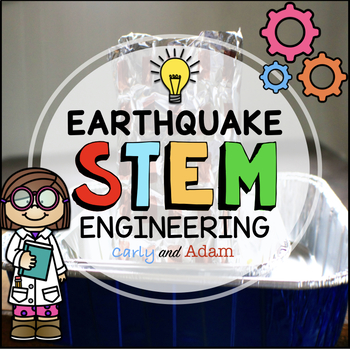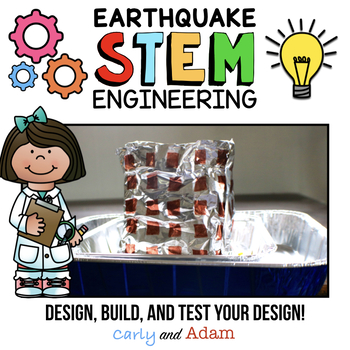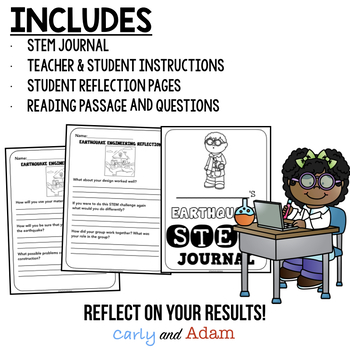Earthquake Engineering STEM Challenge
- PDF
- Easel Activity
What educators are saying
Also included in
- Give your students a Natural Disasters Unit that they will love! With these engaging Natural Disaster STEM projects, students learn about Volcanoes, Hurricanes, Tornadoes, Blizzards, and Earthquakes. The become real world engineers solving real world problems.Each natural disaster activity begins wiPrice $14.00Original Price $18.50Save $4.50
Description
Can you structure survive an earthquake?
Students love completing this natural disaster STEM challenge! Students learn about what causes Earthquakes, as well as some current methods structural engineers are using to design earthquake resistant buildings.
After learning about earthquakes students design, build, and test an earthquake proof structure using only the materials provided. In order to successfully complete this STEM challenge the structure must remain standing after going through an earthquake simulation.
This activity helps students develop critical thinking and engineering skills. Students plan, design, and execute their own ideas. After they have completed their activity, there is time for reflection on what worked and what didn't.
Aligns with NGSS(Next Gen Science Standards).
Materials List:
- 1 large aluminum pan
- 1 small aluminum pan
- straws
- scissors
- tape
- aluminum foil
- Play-Doh
Includes:
- Teacher Instructions
- Student Instructions
- STEM Journal
- Student Planning Pages
- Student Reflection Sheet
- Reading Passages and Questions
- NGSS Standards
- TpT Digital Version for Distance Learning with Google Classroom
Digital Activity:
To use Easel for Distance Learning, select "Open in Easel" on this listing.
CHECK OUT OUR BLOG
Be sure to check out our blog, The Carly and Adam Blog, for teaching tips and discussion.
FOLLOW OUR STORE!
Copyright ©Carly and Adam. All rights reserved by Carly and Adam. This product is to be used by the purchaser only. Copying for more than one teacher, classroom, department, school, or school system is prohibited. This product may not be sold, distributed, or displayed digitally (in part or in whole) for public view. Failure to comply is a copyright infringement and a violation of the Digital Millennium Copyright Act (DMCA).







